Recent Articles
Popular Makes
Body Types
2016 Ford F-150 Road Test and Review
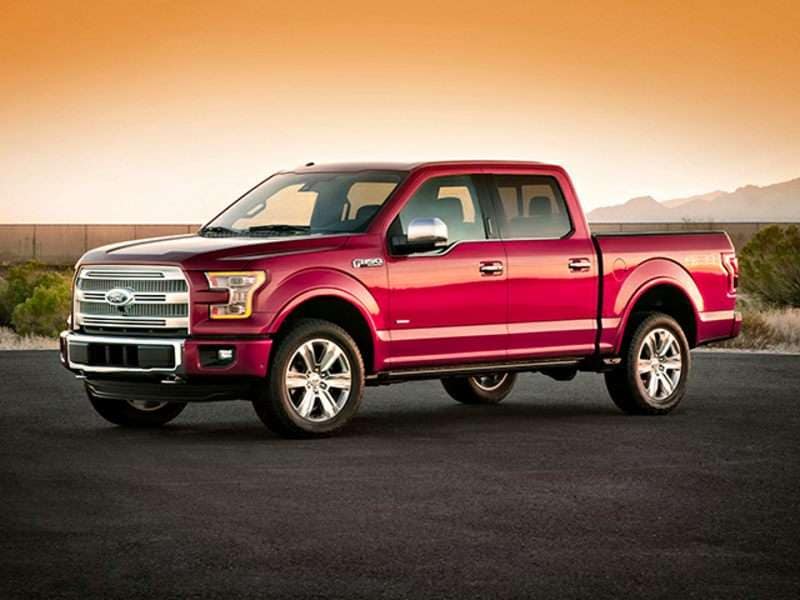
2016 Ford F-150 ・ Photo by Ford
Pickup buyers are intensely brand loyal; there are many owners who would never consider a Ford simply because it's a Ford. I am a pickup owner, and I'm not particularly brand loyal—and after a week with a Ford F-150, I'm seriously considering buying one as my next truck. Let's hook up the horse trailer and take the Ford F-150 for a test drive.
Ford's Aluminum Wonder
Before I talk about why I like the F-150, let's talk about what sets it apart from other half-ton fullsize pickups. When Ford introduced the latest generation of the F-150 for the 2015 model year, it made the monumental decision to switch construction of the body and bed from steel to aluminum. Aluminum is lighter than steel, allowing Ford to shed several hundred pounds from the truck's curb weight. This yields two key advantages: First, lighter vehicles use less fuel than heavier ones. Second, less weight means more payload and towing capacity.
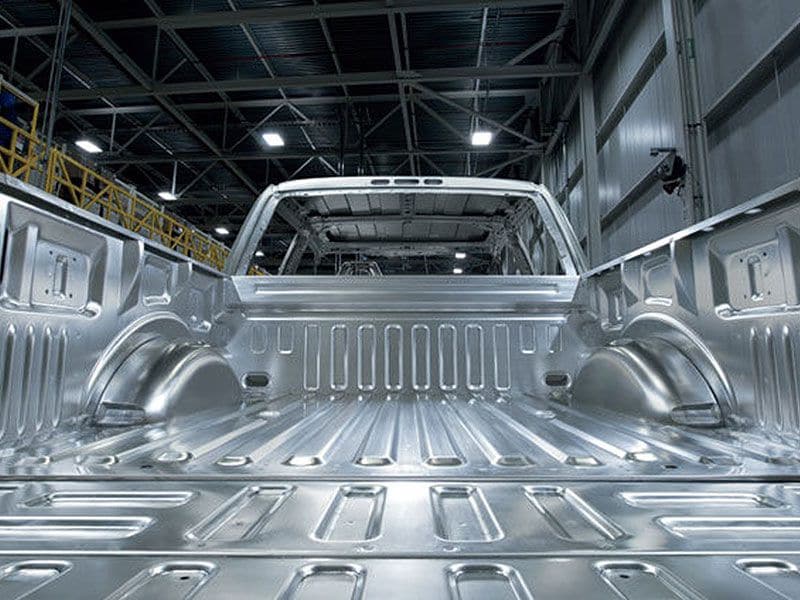
Photo by Ford
Why a lighter truck can haul more...
Pickup trucks are generally designed for a fixed GVWR—Gross Vehicle Weight Rating—which is the maximum permissible weight of the truck and everything in it, including people, fuel, and cargo. (The F-150's GVWR ranges from 6010 to 750 lb., depending on how it is configured.) Contrary to popular belief, a pickup can't safely carry everything that will fit in the bed. Every pickup has a set payload capacity, governed largely by the weight of the truck and its GVWR. For a given GVWR, if a truck weighs 300 lb. less, that's 300 lb. more that it can carry. In the case of the Ford F-150, payload ranges from 1570 up to 3270 lb. If you plan to use your truck for heavy hauling, it's important to check Ford's payload chart to pick the best configuration. Same goes for towing capacity, by the way; here the figure is GCWR—Gross Combined Weight Rating—which includes the trailer. Again, for a given GCWR, a lighter truck can safely tow more. (The F-150 tows between 5000 and 12,200 lb; see the Towing Chart). Aluminum construction is one reason the F-150 can approach the payload and towing capacities of three-quarter-ton trucks. But aluminum does have its downsides, particularly with collision repair: Working with aluminum is a special skill, and there aren't as many shops that can work on an aluminum vehicle. That may result in longer repair times, higher repair costs, and possibly higher repair bills.
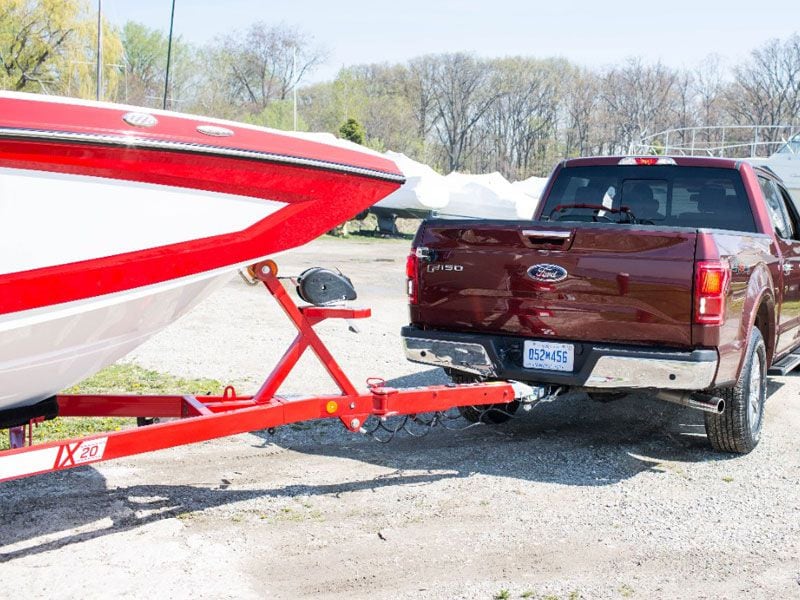
Photo by Ford
Our tester: A worker bee.
Ford offers an F-150 for every purse and purpose, and the truck I tested was designed for work: a refrigerator-white entry-level XL with cool-looking steel wheels complete with “dog dish” hubcaps and a relatively Spartan interior. Ford's 2.7-liter EcoBoost twin-turbo V6, 4-wheel-drive, a towing package and a suite of comfort and convenience package brought the price up to around $41,000—a lot of dough for a truck with rubber flooring instead of carpets. That said, I can appreciate a truck that is designed for work. Such is the case with our own 20-year-old Chevy pickup: If doesn't have a job to do, it's parked. I wanted to see just how good the Ford's work ethic is; furthermore, I wanted to see how Ford's new towing-assistance gizmos work and how the (relatively) small turbo engine would cope with a load. According to the towing chart, our F-150 could tow 7500 lb., so my wife Robin and I hooked up our horse trailer, loaded up Aiden the horse for total trailer weight of around 5000 lbs, and hit the road.
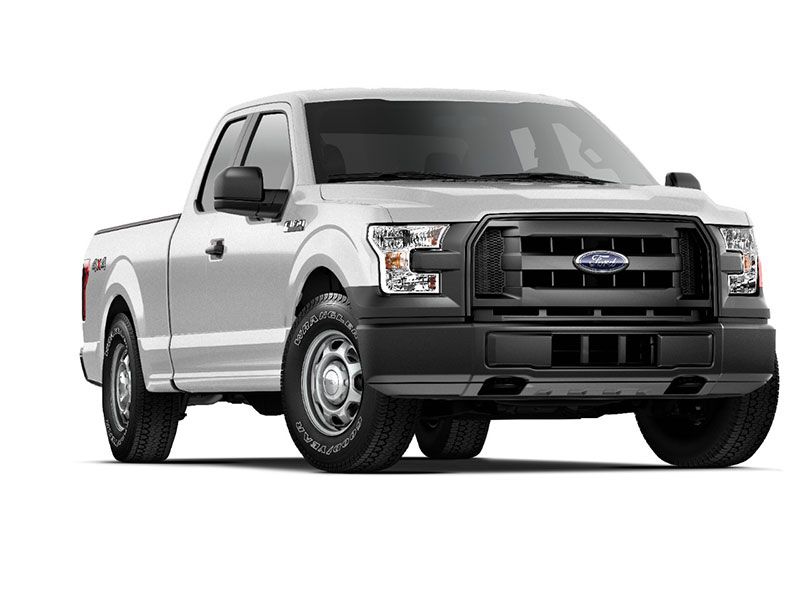
Photo by Ford
Towing with the F-150
I'd forgotten how much I enjoy towing with Ford trucks, and our test-tow in the F-150 reminded me: With a properly loaded trailer, the half-ton F-150 feels as solid and stable as our three-quarter-ton Chevy, and it's not prone to the “porpoising” I've experienced in other fullsize trucks. The 2.7-liter EcoBoost V6 is supposed to provide the pulling power of a small V8, and that it did—it had no trouble accelerating to 60 MPH on an uphill onramp and holding that pace over the Santa Susana Pass. Had I not known any better, I would have assumed the truck had a V8 under the hood. Downshifting yielded good engine braking, and the built-in trailer brake controller worked well. After a few runs up and over the pass, I checked the truck's fuel economy: 12 MPG, which I consider very satisfactory for the work we were asking of this new Ford pickup.
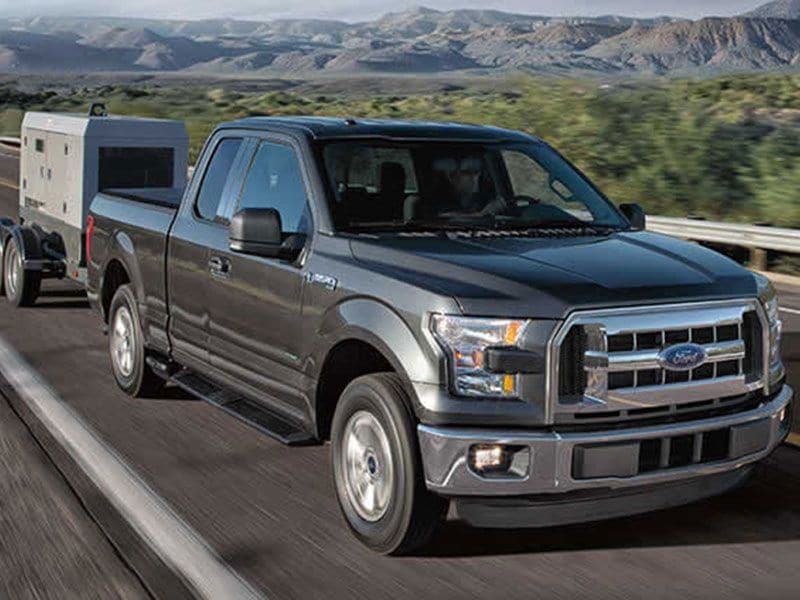
Photo by Ford
Pro Trailer Back-Up Assist: Possibly the best towing gadget ever.
Back at the ranch, Robin unloaded Aiden and I went to play with one of the F-150's new towing features, Pro Trailer Back-Up Assist, which automates the process of steering the trailer in reverse. To use this feature, one must place a checkerboard sticker on the back of the trailer, take a few measurements, and enter them into the F-150's onboard computer. The system can stow information for multiple trailers, and the truck comes with a pack of stickers and easy-to-follow instructions. It took me about 10 minutes to set up our trailer. When it's time to back up, you put the truck in reverse, press a button on the dash-mounted dial, and select your trailer from the dashboard menu. Once the camera “sees” the sticker, you let go of the steering wheel and do all of your steering with the dial: Turn left to point the back of the trailer left, right to point the back of the trailer right, and center the dial and make the trailer go straight. The system uses the electric power steering system to move the steering wheel, doing all the wheel-twirling needed to make the trailer go where you point it.
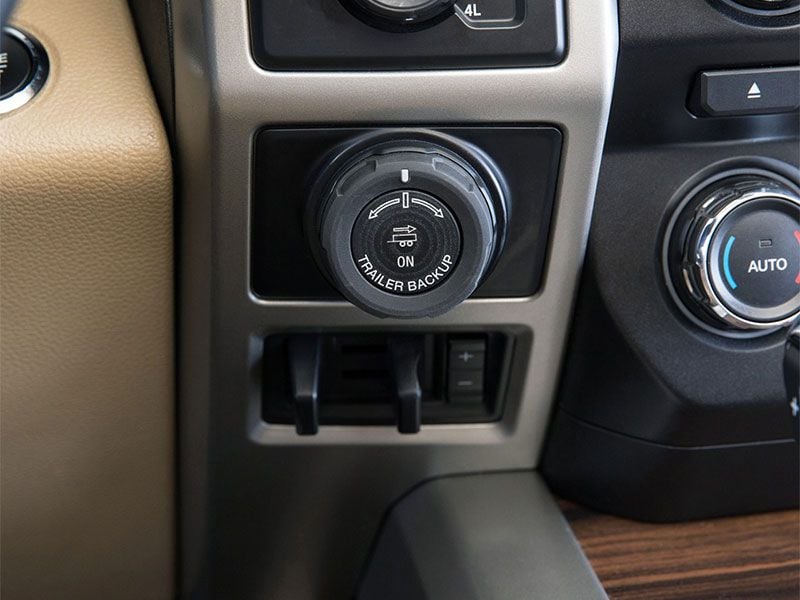
Photo by Ford
“But I know how to back up a trailer...”
Now, you might be thinking the same thing I was: “I know how to back up a trailer, and I don't need no stinkin' computer to do it for me!” Even if you're the best trailer-backer in the world, this system makes trailer-backing easier, especially backing in a straight line. Ever have that situation where you think you have the truck lined up right, then you back up 30 feet and find the trailer is a foot or so to the right of where you wanted it? (Too close away to make it worth re-parking, but far enough away that it'll bother you.) With Pro Trailer Back-Up Assist, that never happens, because the system knows exactly what it needs to do to keep the trailer pointed in the direction you've selected. I'm a pretty good trailer-backer—not the world's best, I'm sure, but I get by—and if I owned an F-150, I think I'd always use this system. Always. And if you aren't comfortable (or good at) backing up a trailer, then you need read no further than this next sentence: Buy an F-150 with this feature and you'll never have to worry about backing up a trailer again.
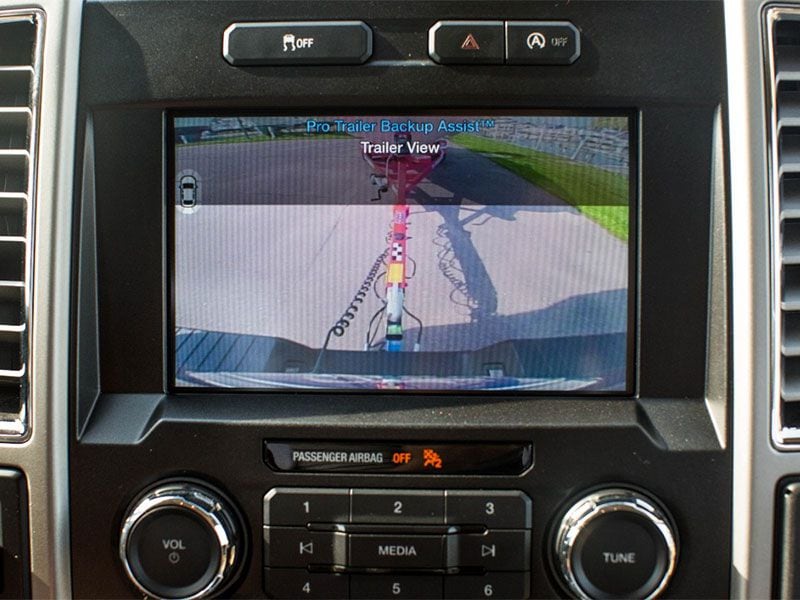
Photo by Ford
Daily life with the Ford F-150.
Towing tests complete, Robin and I settled in for a few days of using the F-150 as our daily driver. Again, the truck proved perfectly satisfactory: It had all the creature comforts we expect, including air conditioning, cruise control, power windows and locks, and a decent stereo, though most of these features are optional on the entry-level XL. Our truck had what amounts to a bench seat, though it's really two individual buckets (with the proper side support that an actual bench lacks) with a large center section that can fold down to serve as an armrest or fold up to accommodate a passenger. The transmission shifter was mounted on the steering column, an arrangement I find much more satisfactory for a pickup truck than a center-console-mounted shifter (it's a truck, not a sports car). The cabin had no silly Western-themed graphics or leather seats embossed with fake cattle brands (though you can get such adornments on an F-150 if you are so inclined); this was a no-nonsense interior that was comfortable and easy to use, and it earned my respect.
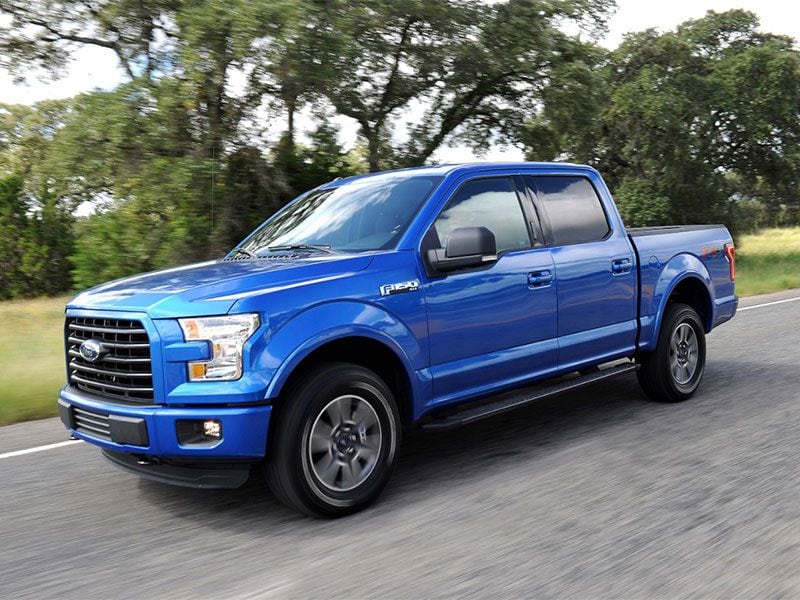
Photo by Ford
F-150 Versus the Competition
How does the Ford F-150 compare to other trucks? In my opinion, the F-150's dash layout isn't as good as the Chevrolet Silverado's and GMC Sierra's, especially if you opt for a touchscreen stereo—GM's is much more intuitive. That said, the Chevy and GMC don't feel quite as stable as the Ford when towing. Nissan's new Titan XD model delivers half-ton comfort with better towing capacity, but the diesel is thirsty. The Toyota Tundra is a great all-around truck, and the RAM 1500 is downright fantastic, especially if you opt for the fuel-efficient diesel engine and air-sprung suspension. if I had to pick a truck as a daily driver, I'd probably choose the Ram over the Ford. Of course, we don't drive our truck every day; we use it for work, and as a down-to-business workhorse, the F-150 proved its worth to me.
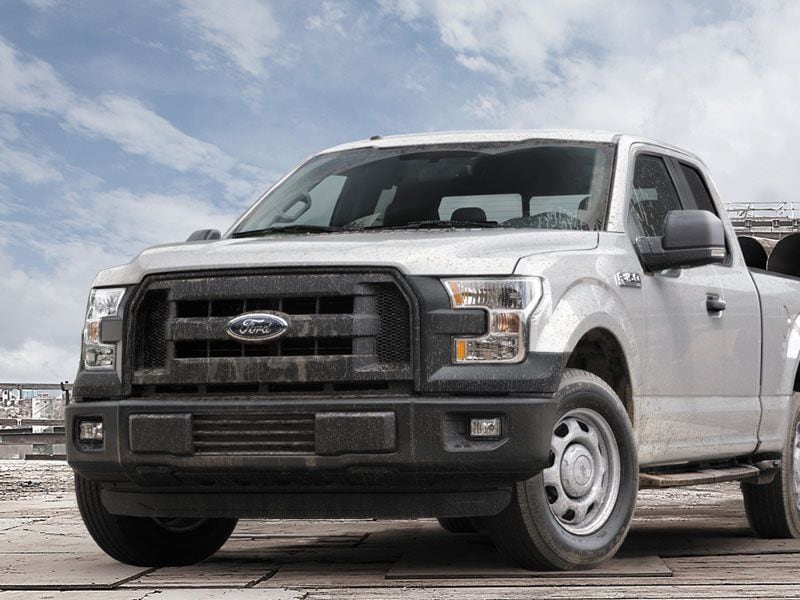
Photo by Ford
A Ford of my own?
When the time came to return the F-150 to Ford, I seriously considered selling the Chevrolet and buying either our tester or one just like it. The F-150 is a great towing platform, I love the Pro Trailer Back-up Asisst feature, I was impressed by the 2.7-liter EcoBoost engine's mix of power and fuel economy, and I was sure that the XL's cabin and bed could stand up to the hard use to which the ol' Chevy is subjected. And I really liked that I could get all the features that make a good towing rig in a low-end and relatively unadorned truck. It was only our test truck's $41,000 price tag that kept me away from the dealership... for now, at least. When the Chevy gives up the ghost—if it ever does, and I'm not convinced that it will—I may well become a Ford owner.
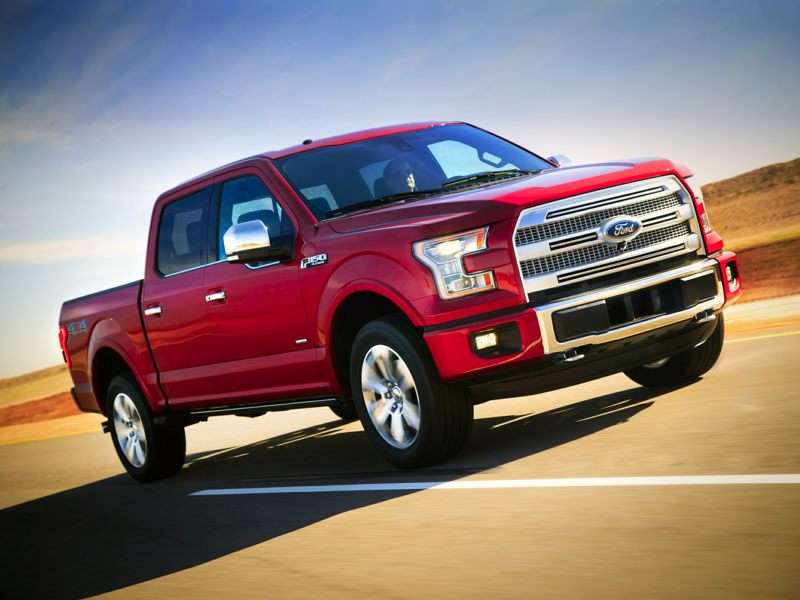
Photo by Ford